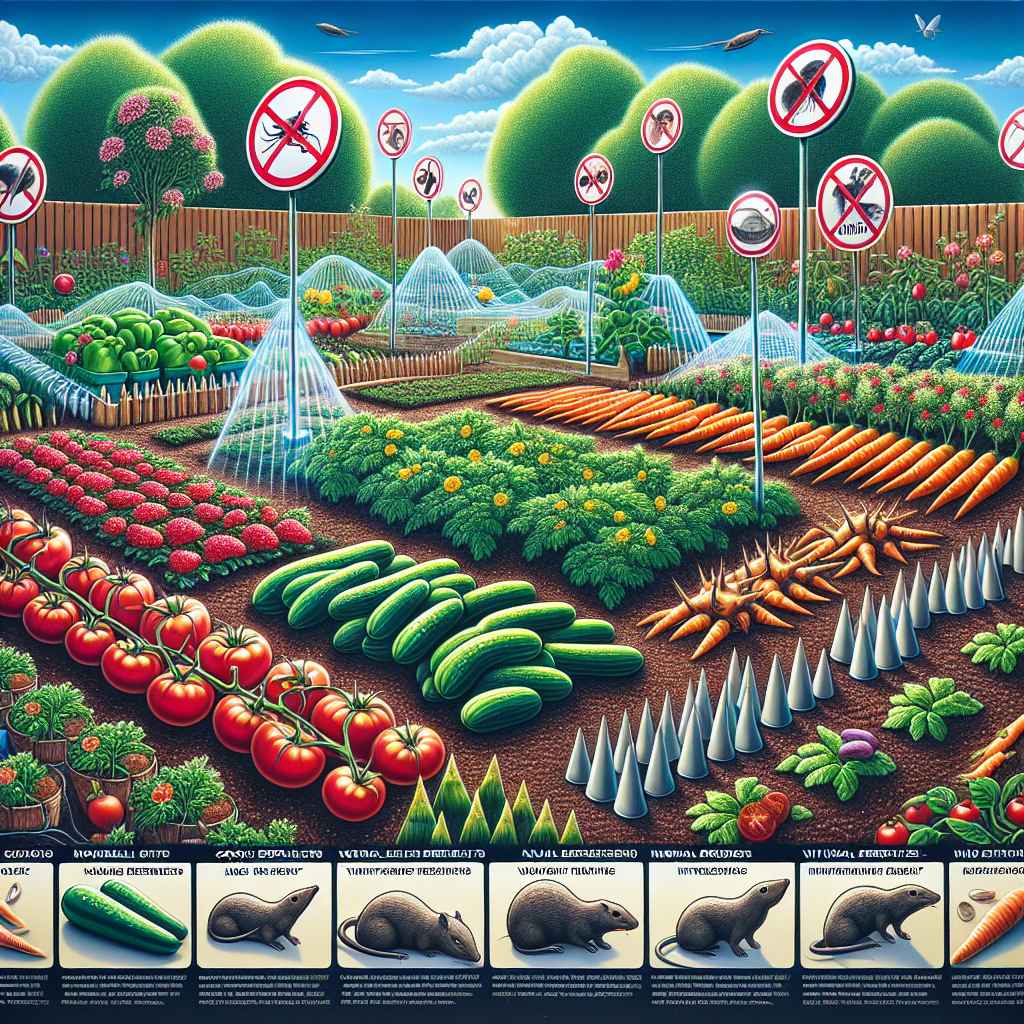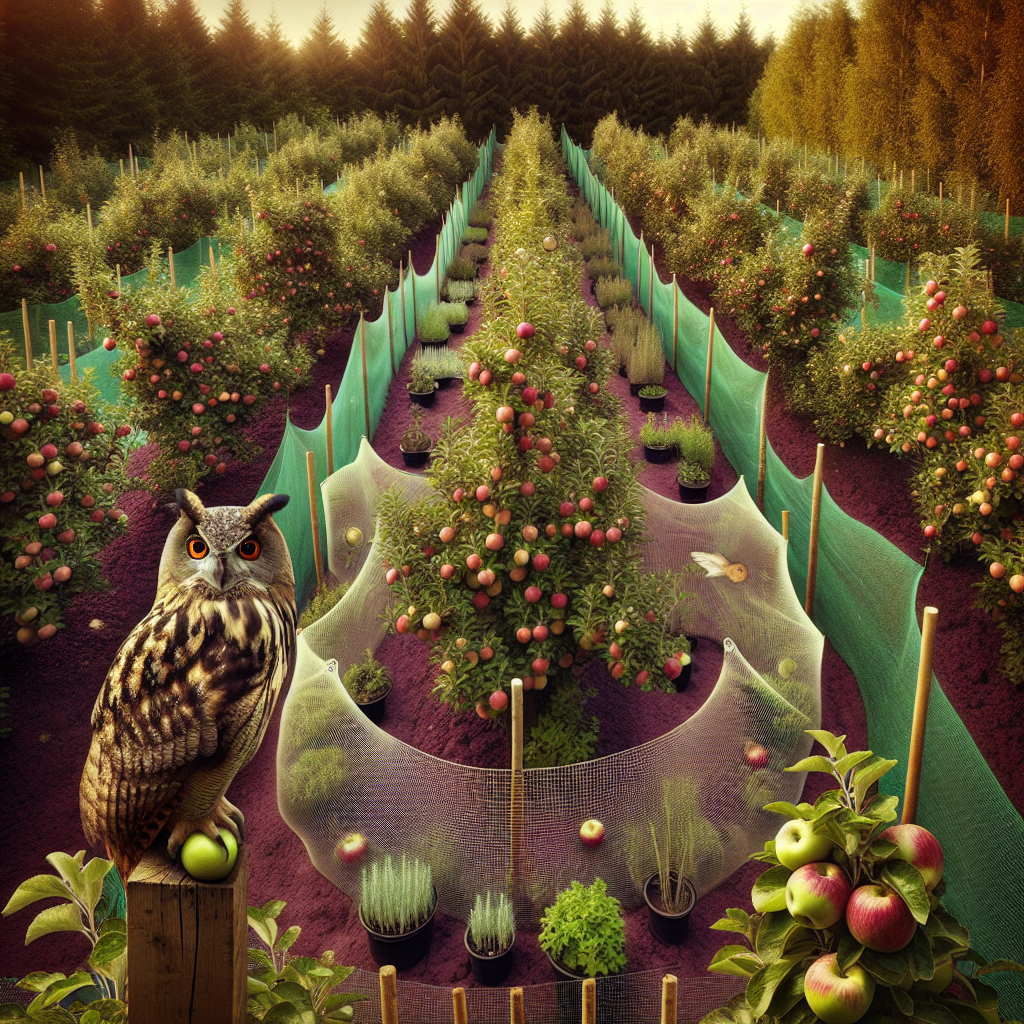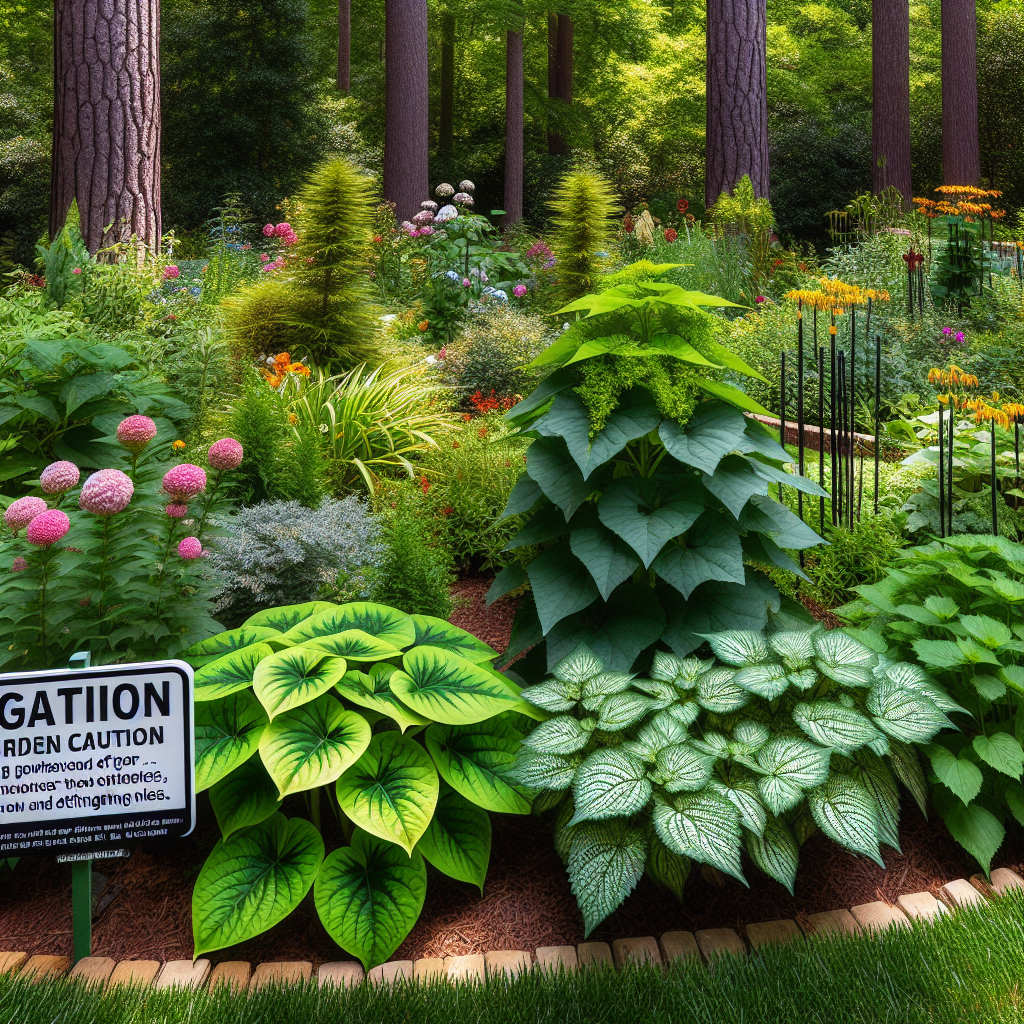Growing Lavender in Your Garden: Tips for a Fragrant Outdoor Oasis
Updated June 20, 2024 at 6:23 pm

Creating the Ideal Environment for Lavender to Thrive
If you’re thinking about adding a touch of purple to your garden and infusing the air with a calming aroma, then lavender should be on your list of plants to grow. Often associated with the purple fields of Provence, France, lavender has become a beloved plant for gardeners looking to create a fragrant outdoor oasis. It’s not only treasured for its delightful scent and aesthetic appeal, but also for its hardiness and versatility.
However, before you begin, it’s essential to know that lavender has specific needs to flourish. In this article, we’ll delve into every aspect of growing lavender, from choosing the right variety to planting, maintenance, common issues, and more.
-
Pet Friendly:
Generally, lavender is considered safe for pets. It’s always a relief to know you can grow a beautiful garden without putting your furry friends at risk.
Light Requirements:
Lavender requires full sun, thriving in at least six to eight hours of direct sunlight per day.
Watering:
Being drought-tolerant, lavender doesn’t need much water. Overwatering can harm it, so ensure the soil is dry before you water again.
Humidity:
Lavender prefers dry to moderate humidity. High humidity levels might be problematic, causing the plant to become leggy or susceptible to disease.
Temperature:
This plant loves warm, temperate climates but can tolerate a range of temperatures once established.
Difficulty:
Lavender is easy to grow for most gardeners, provided its light and water needs are met, and it is planted in well-draining soil.
Choosing the Right Lavender for Your Garden
Not all lavenders are the same. There are several species and varieties, each with its charm and benefits. The most common and hardy species is Lavandula angustifolia, commonly known as English lavender. But there’s also French lavender (Lavandula stoechas), Spanish lavender (Lavandula lanata), and numerous hybrids.
When selecting a lavender plant, consider the climate of your area. If you live in a colder region, a hardier species like English lavender might be your best bet. On the other hand, if your region experiences mild winters, you might opt for the more temperamental yet striking French lavender. A visit to a local nursery or some research online can help determine which variety will thrive in your specific conditions.
Planting Lavender for Success
Once you’ve chosen your lavender variety, it’s time to think about planting. The key to lavender’s success starts with the soil. Lavender must be planted in loose, well-draining soil to prevent root rot. If your garden soil is heavy or clay-like, consider amending it with sand or small gravel. Alternatively, lavender also thrives in containers, which can provide better drainage.
Spacing is also crucial for lavender. Plant them far enough apart to ensure good air circulation. Usually, 1 to 3 feet apart is sufficient, depending on the variety. When planting, add a little bit of lime to raise the soil’s pH if needed.
The best time to plant lavender is in the spring after the danger of frost has passed. This gives the plant ample time to establish its root system before winter. During the planting process, make sure to set the plants at the same depth they were in their nursery pots to avoid burying the crown of the plant, as this can lead to rot.
Optimal Care and Maintenance
Caring for lavender is relatively straightforward, but there are some key practices to follow for vigorous growth and abundant blooms. Here are some tips to keep in mind:
Pruning is essential for lavender, not only to maintain shape but also to promote new growth and prevent woodiness. Prune in early spring or after the first flowering. Be sure not to cut into the woody part of the plant, as this can damage it.
Fertilization isn’t a significant concern for lavender, as it typically thrives in poor soils. Over-fertilizing can lead to fewer flowers and might even harm the plant. If necessary, consider using a slow-release fertilizer sparingly in the spring.
If you’re looking to enhance the growth and bloom of your lavender, products like Jobe’s Organics Herb Plant Food Spikes can be useful. Reviewers say these pre-measured spikes provide a no-mess way to deliver nutrients straight to the roots, supporting greener growth. Remember, moderation is key, especially with lavender.
Find This and More on Amazon
Managing Pests and Common Problems
Despite its resilience, lavender can sometimes attract pests or run into problems. Aphids and whiteflies are common pests, though they can usually be managed with a strong spray of water or organic insecticidal soap. As for diseases, root rot is a primary concern due to overwatering or poor drainage.
If you notice your lavender plant has started to wilt or the leaves turn yellow, this might indicate overwatering or that the plant is sitting in too-wet soil. Adjust your watering schedule and ensure adequate drainage to address this issue. In cases of fungal diseases, such as lavender’s common foe, alfalfa mosaic virus, removing and destroying affected parts of the plant is the best course of action.
You might be wondering about those crunchy, woody stems that occasionally appear. This woodiness occurs as lavender ages but can be minimized with regular pruning, which encourages soft new growth. If your plant has become too woody, consider taking cuttings from the newer growth to start fresh plants.
The Harvest: Enjoying Lavender Beyond the Garden
One of the greatest joys of growing lavender is harvesting it. You can cut lavender stems to use in bouquets, sachets, or for their essential oils. The best time to harvest is in the morning when the oils are the most concentrated. Aim to cut when the buds are formed but before they have fully opened for the most potent fragrance and longest lasting cut flowers.
For drying lavender, gather the stems in small bundles and hang them upside down in a dark, dry place with good air circulation. Once dried, the buds can be easily stripped from the stems and used for a variety of purposes, such as potpourri, cooking, or homemade beauty products.
Consider the following when harvesting and utilizing your home-grown lavender:
- Timing: Harvesting at the right time ensures maximum fragrance and longevity.
- Drying: Proper drying techniques will retain the quality and scent of your lavender.
- Storage: Store dried lavender in airtight containers away from direct sunlight to preserve its aroma.
Additionally, products like the ‘OnTier Stackable Herb Drying Rack’ can make the drying process more efficient and protect your lavender from dust and pests. Customers appreciate how the rack expands for larger harvests, permitting air circulation to properly dry the herbs. This user-friendly tool can be crucial for those looking to preserve their lavender’s aroma and color.
Find This and More on Amazon
Companion Planting with Lavender
Lavender does not just fare well on its own; it can also make a great companion to many plants. Companion planting can help deter pests, attract beneficial insects, and even enhance the growth and flavor of garden vegetables and herbs. Lavender pairs well with plants like rosemary, thyme, sage, and oregano, which require similar growing conditions. It can also help protect roses and several vegetables from aphids and rabbits due to its strong scent.
However, be mindful of lavender’s water and sunlight needs when selecting companion plants. It’s not a good neighbor to water-loving plants, as excess moisture can promote disease in your lavender plants. Stick to those with similar drought-tolerant features for a harmonious and healthy garden.
Making Lavender a Focal Point in Garden Design
If you’re aiming to create a visually striking garden, consider using lavender as a focal point. Its silvery foliage and purple blooms can make a bold statement in garden beds or along pathways. And by creating a border or grouping several lavender plants together, you can create a mass of color that not only looks fantastic but also fills the air with fragrance.
When planning your garden, think of the height and size that different lavender varieties can reach. Some can grow more than a meter tall, which can influence where you might want to place them. For a seamless garden design, you can combine different species and varieties of lavender to achieve varying heights and blooming times, ensuring a long-lasting display of color and scent.
Propagating Lavender for More Plants
If you fall in love with lavender and want more, propagation is a cost-effective way to increase your collection. Propagation can be done via cuttings, which is an easy process. Here’s how:
- Timing: Early to mid-summer is ideal for taking cuttings, as the plants are in active growth.
- Cuttings: Select healthy, non-flowering shoots, as they root better than flowering ones. A few inches of stem, with leaves removed from the bottom half, works best.
- Rooting medium: Choose a well-draining mix, such as a combination of perlite and peat, to stick your cuttings in.
- Rooting hormone: Although not necessary, dipping the bottom of the cuttings in a rooting hormone can improve the success rate. Products like Hormex Rooting Hormone Powder are said to significantly hasten root development.
- Care: Keep the cuttings in a bright, but not direct sun location, and maintain the moisture of the medium without overwatering.
In about a month, your cuttings should have developed roots and can be potted up individually. Products like the ‘Hormex Rooting Hormone Powder’ receive positive feedback for their ability to increase rooting success, according to some gardeners. Using a rooting hormone can be particularly helpful when propagating difficult-to-root varieties of lavender.
Find This and More on Amazon
Long-Term Care to Keep Lavender Thriving
With the proper initial setup, lavender is relatively low maintenance. However, long-term care is crucial to keep your plants thriving year after year. Winter care is especially important for colder climates. Here’s how to help your lavender plants to survive the cold season:
- Insulation: Mulch can help protect the roots from freezing temperatures. Use materials like straw or bark, but avoid organic mulches that retain moisture.
- Pruning: Avoid heavy pruning in late fall, as this can lead to new growth that is vulnerable to frost damage. Instead, prune lightly if necessary.
- Protection: In extremely cold areas, covering your lavender plants with a cloche or horticultural fleece can provide extra warmth.
- Container plants: If you grow lavender in pots, consider bringing them indoors or into a garage for the winter to prevent the roots from freezing.
Maintaining these practices helps ensure that your lavender will not only survive but continue to provide fragrance and beauty for years to come.
Environmental Benefits and Uses of Lavender
Lavender isn’t just a treat for the senses; it’s also beneficial for the environment and wildlife. As a pollinator-friendly plant, it attracts bees, butterflies, and other beneficial insects to your garden. Moreover, lavender can be a natural way to repel certain pests without resorting to harsh chemicals.
Aside from its environmental benefits, lavender has numerous uses. Its essential oil is commonly used in aromatherapy for its relaxation properties. You can also use the flowers in culinary dishes, from savory recipes to desserts, for a unique, herby flavor. Always ensure you’re using culinary-grade lavender for these purposes, as some ornamental varieties may have been treated with chemicals not intended for consumption.
Joining a Community of Lavender Enthusiasts
If you’re new to gardening, or specifically to growing lavender, don’t hesitate to reach out to local gardening clubs or online forums for advice and support. Joining a community of fellow lavender enthusiasts can provide valuable insights, trade cuttings, and even participate in local lavender festivals. It’s a wonderful way to learn more about this versatile plant and to share your experiences with others.
In forming these connections, you might discover unique varieties, such as ‘Hidcote’ or ‘Munstead’, which are popular among gardeners for their hardiness and rich scent. Exchanging tips and tricks with other growers can make your lavender-growing journey a rich and rewarding experience.
Enduring Beauty: Lavender’s Timeless Appeal
Lavender is a classic plant that never goes out of style. Whether it’s the allure of its purple blooms, the mesmerizing scent, or the simple joy of watching bees buzz happily from flower to flower, lavender brings an undeniable charm to any garden. With the proper care, this hardy and versatile plant can provide beauty, fragrance, and a sense of tranquility for years to come.
As we’ve discussed, from selecting the right variety to planting, care, harvesting, and even propagating your own plants, lavender can be both a practical and a luxurious addition to your outdoor space. It’s easy to see why lavender continues to capture the hearts of gardeners around the world, and with these tips, you’re now ready to grow your very own lavender oasis. Happy gardening!
Discovering the Therapeutic and Craft Potential of Lavender
Lavender’s uses extend far beyond its beauty in the garden. Its flowers and oil have been prized for centuries for their therapeutic properties. Infused in bath water, used in massage oils, or simply inhaled, lavender has a proven calming effect that can decrease stress and aid in sleep. This is one reason why many gardeners grow their lavender—it’s not just its ornamental value, but also its potential to contribute to their well-being.
But the versatility of lavender doesn’t stop with its aromatherapy benefits. Lavender can be incorporated into all sorts of crafts and homemade products. From creating beautifully scented candles and soaps to weaving lavender stems into wreaths or making lavender-infused oils and vinegars, there’s no shortage of creative ways to use this plant. Start simple with homemade sachets: Fill small cloth bags with dried lavender buds, and place them in your drawers or hang them in closets for a natural fresh scent.
Leveraging Lavender to Boost Home Aesthetics
Lavender can also play a significant role in home decor. From a fresh bouquet on the kitchen table to dried arrangements that last all year round, lavender can brighten up any space with its color and perfume. For a rustic, charming touch, tie a bunch of dried lavender with a ribbon and hang it on a door or lay it atop a stack of books on a coffee table. It’s a simple yet instantly uplifting addition to your home’s aesthetic. And don’t forget, planting lavender near windows allows its fragrance to waft indoors, enhancing your living spaces with a natural aroma.
Moreover, crafting a DIY lavender room spray is straightforward—just mix water with a few drops of lavender essential oil, and you’ve got a refreshing spray that can give your linens, upholstery, and air a light, fresh scent.
Gift Ideas: Sharing Your Lavender Harvest with Loved Ones
With the lavender you grow, you can create thoughtful, handcrafted gifts for friends and family. Bundles of dried lavender, homemade lavender soaps, or vials of pressed lavender oil make for personal, eco-friendly gifts that carry the essence of your garden. You could even bottle the dried buds into small jars, tie them with twine, and add labels describing their potential uses.
In the realm of edibles, lavender can be used to infuse sugars or create tea blends, which are delightful for anyone who loves culinary experiments. Remember to let recipients know that they’re enjoying a share of your personal garden – it adds a touch of sentiment to the gift that no store-bought item can match.
Incorporating Lavender into Culinary Delights
Lavender has a unique place in the kitchen as well. Its buds can be a wonderful addition to a plethora of recipes. Imagine the delight of lavender-infused lemonade on a sweltering summer day, or a hint of lavender in your favorite shortbread recipe. Lavender’s floral notes can transform both sweet and savory dishes with a touch of sophistication.
When using lavender in your cooking, it’s important to start with small amounts, as the flavor is strong and can be overpowering if overused. Always use food-grade lavender, especially if it’s straight from your garden without any treatment. A sprinkle of lavender buds can adorn salads, ice creams, and cocktails alike. This is where your garden becomes not only a source of visual and olfactory pleasure but also a culinary resource.
Creating an Educational Experience with Lavender Gardening
Lastly, cultivating lavender offers an excellent opportunity for education and personal growth. Gardening itself is a valuable skill that encompasses areas such as horticulture, environmental science, and even artistry with landscape design. For those with children, maintaining a lavender garden can be a fun and educational family activity. It can teach responsibility and patience as they care for the plants, as well as providing a practical introduction to botany and the life cycle of plants.
Gardening with lavender also encourages a connection with nature and an understanding of ecological systems—how insects interact with plants or how weather influences growth. You can document the growth of your lavender plants, take note of the wildlife it attracts, and observe the ecosystem that builds around it. This hands-on learning is invaluable and enriching, deepening your appreciation and connection with the natural world.
Embracing the Joys and Rewards of Lavender Gardening
Embracing the joys of growing lavender culminates in an experience that touches all senses and aspects of life. Whether you find solace in the serenity it brings, excitement in the wildlife it attracts, creativity in its uses, or fulfillment in its harvest, lavender gardening is a rewarding endeavor that extends its gifts well beyond the confines of the garden itself.
For both novice and seasoned gardeners alike, the beauty and utility of lavender make it an exceptional choice for those looking to enrich their gardens and lives. So, now that you’re equipped with knowledge and tips from soil preparation to propagation, embrace the process of nurturing these lovely plants. In doing so, you’ll soon bask in the splendor and abundance that lavender gardening bestows, creating a fragrant oasis to be enjoyed for many seasons to come.
Shop more on Amazon

